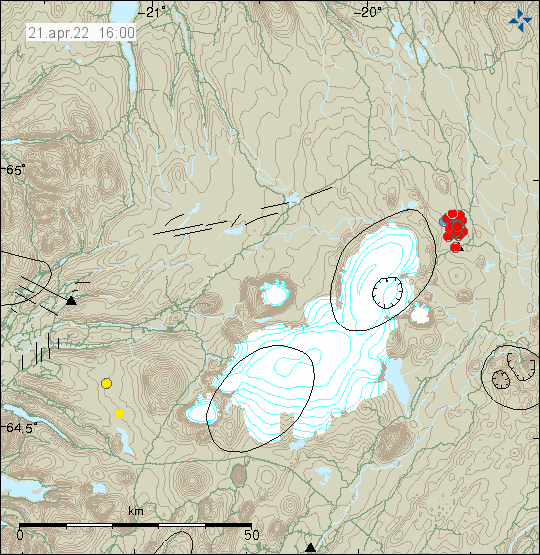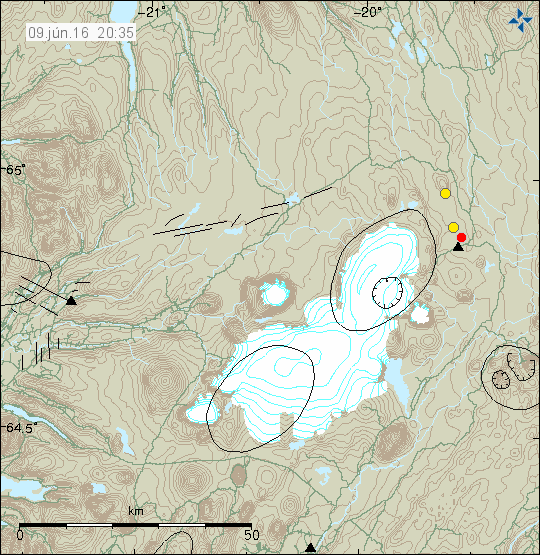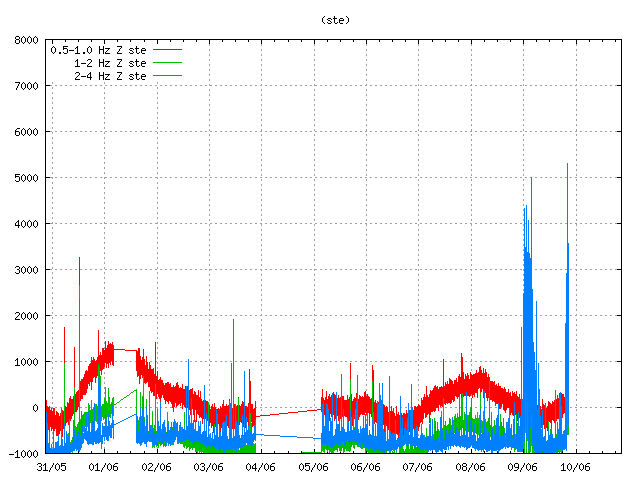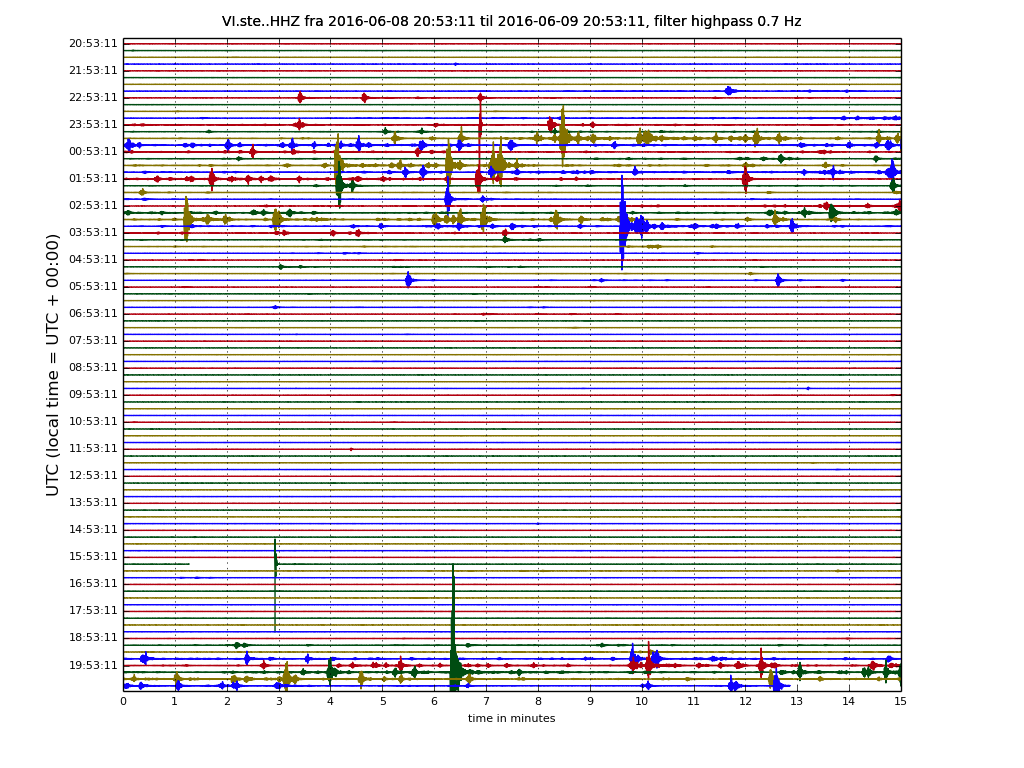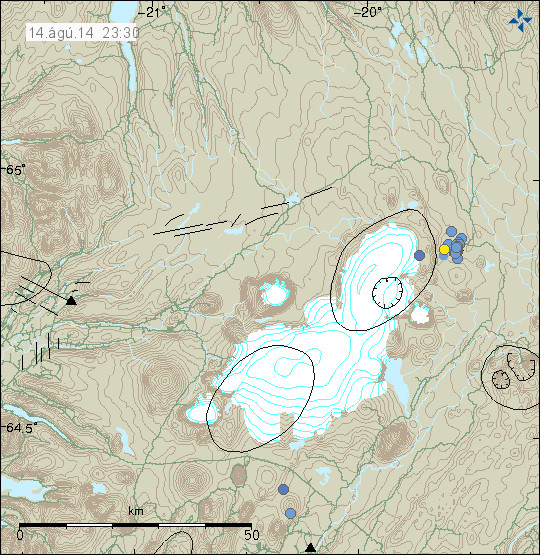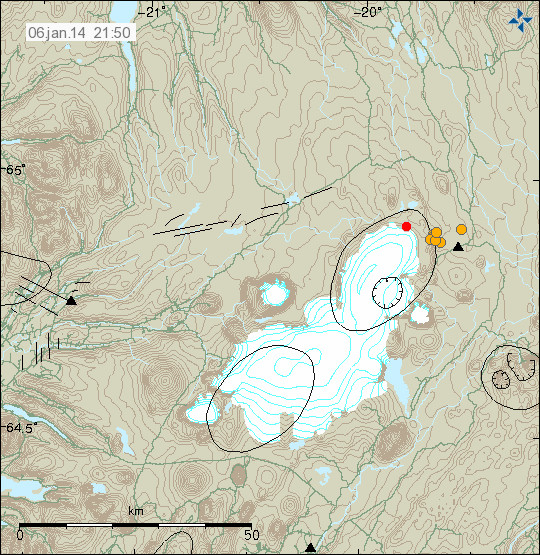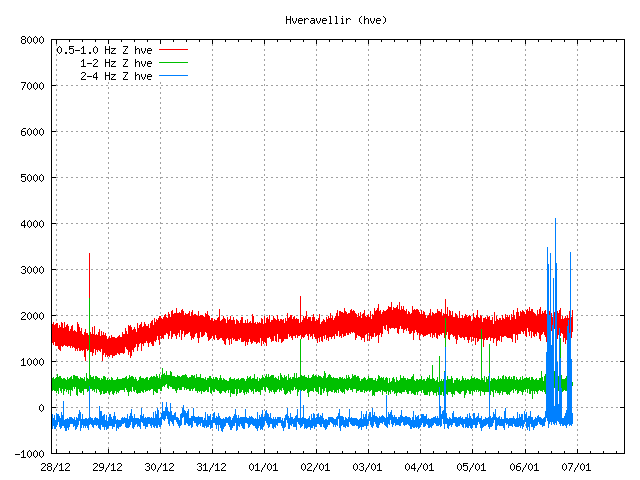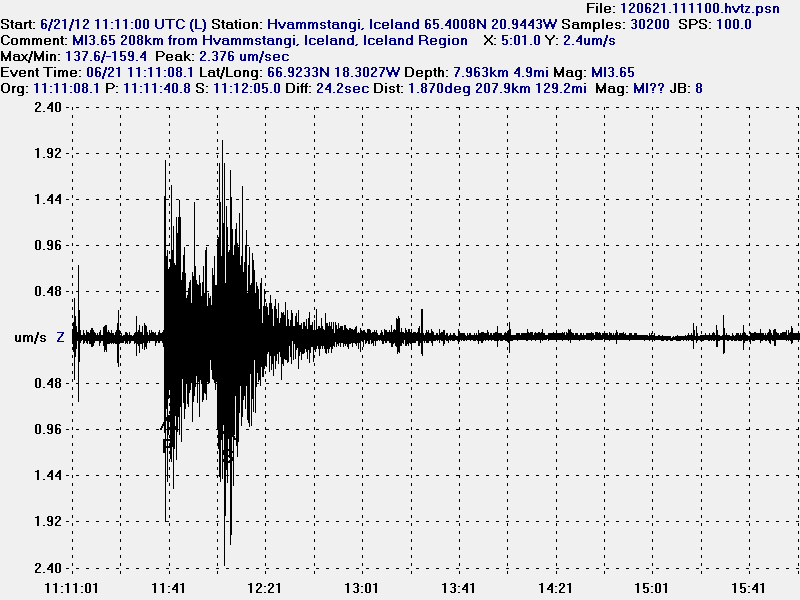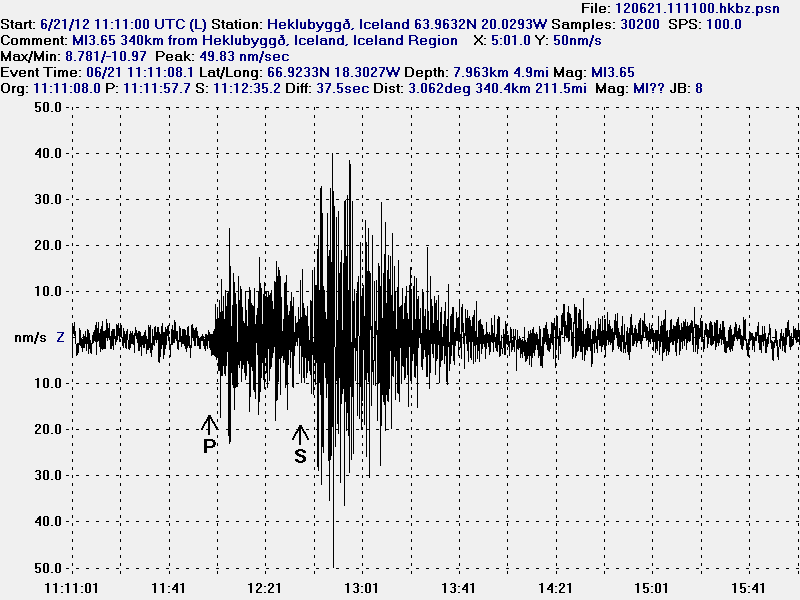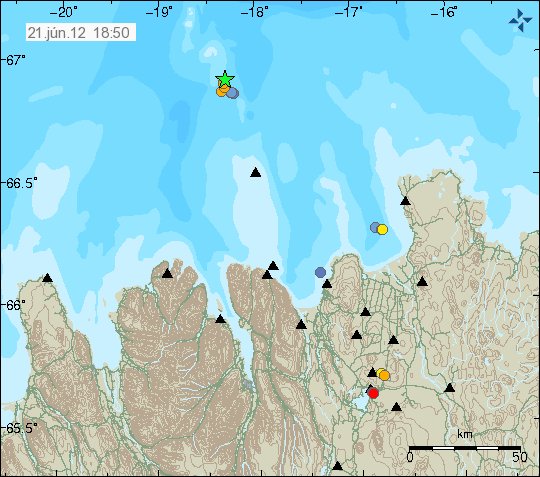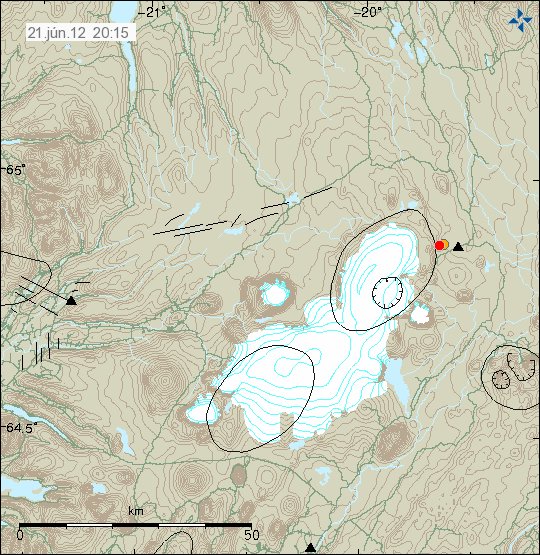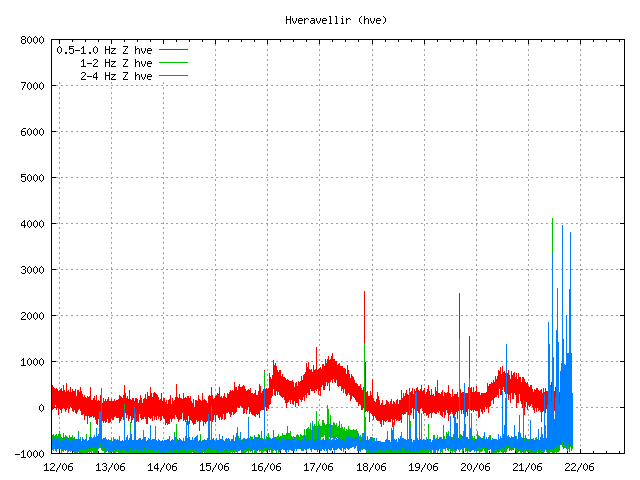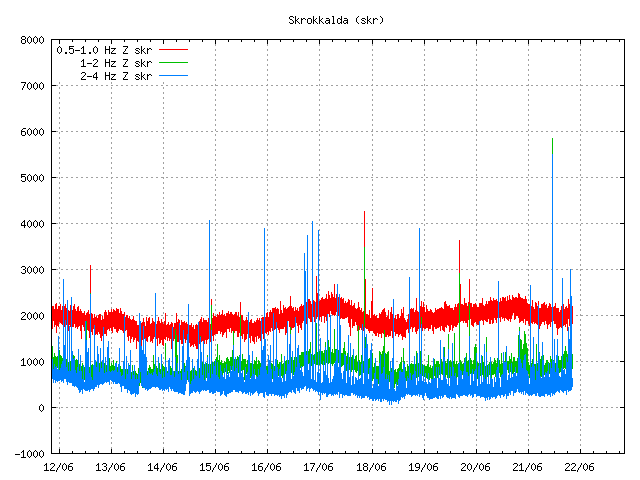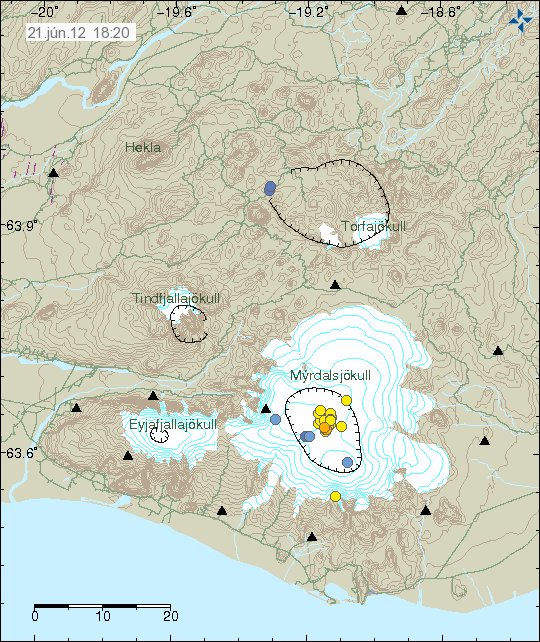This is going to be a little compressed article. Since I’m currently in Iceland. I’ll be back in Denmark on 18-May. No GVP links now. I don’t think that my laptop can handle it (its slowly turning into non-functional computer).
Bárðarbunga volcano
The regular earthquake activity in Bárðarbunga volcano continues, it follows the same pattern has it has been doing for the last 7 – 8 months.
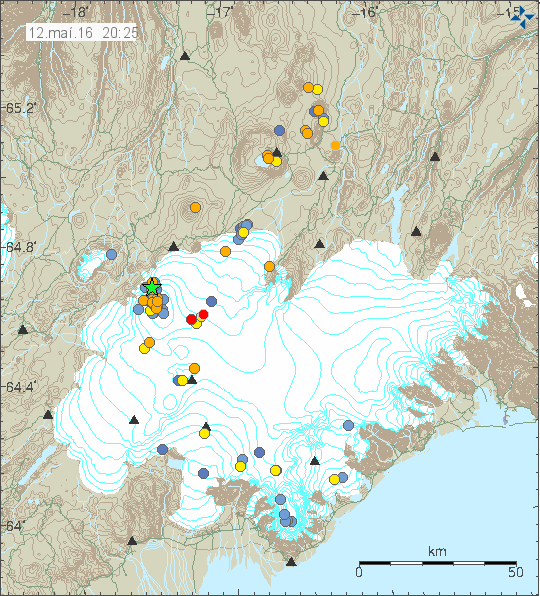
The earthquake activity in Bárðarbunga volcano. Copyright of this image belongs to Iceland Met Office.
The largest earthquake had the magnitude of 3,2. Other earthquakes had smaller magnitude. This earthquake activity is like the earthquake activity before, there doesn’t seems to be a lot of difference between the earthquake swarms that are now taking place between weeks.
Öræfajökull volcano
There is a interesting earthquake activity taking place in Öræfajökull volcano. It suggest that some magma is entering the volcano at depth (5 – 10 km). At the moment there is nothing that suggests an eruption is getting close, however the eruption history of Öræfajökull volcano is not well known and no reliable data exists on what might happen in the case of eruption. At the moment, all of the earthquakes taking place are minor, suggesting the amount of magma entering Öræfajökull volcano is minor at the moment.
Langjökull (north)
Today (12-May-2016) an small earthquake swarm took place in north Langjökull volcano. This earthquake activity has been taking place in this area since the year 2000, it was started by the magnitude 6,5 earthquake in SISZ. The reason for this earthquake swarm are unclear. No change in the main volcano has been observed, both in terms of earthquake activity or other changes. One idea is that this are stress changes in faults at this area, suggesting they might be lateral faults, not connected to the volcano it self.
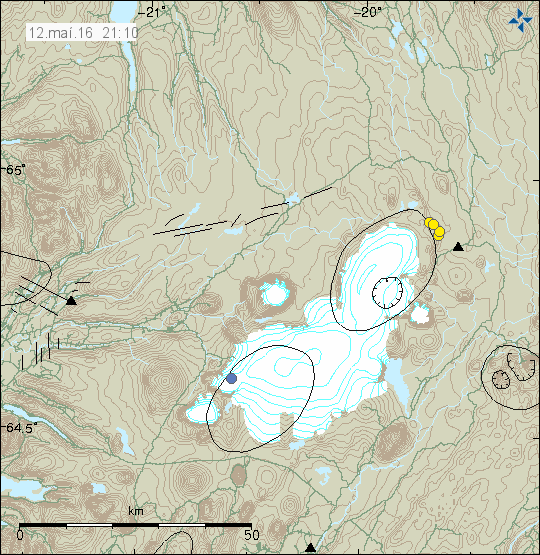
The earthquake activity in Langjökull north volcano (Hveravellir). Copyright of this image belongs to Iceland Met Office.
None of the earthquakes that took place had strong magnitude, largest earthquake had the magnitude of 2,0.
New – Analyzing articles
I plan on to start writing analyzing articles about volcanoes in Iceland in order to attempt to explain what is going on with the most active one and what might happen. Those articles will take few days to write, that means I won’t write many of them each week if needed. This is also going to cover history of the volcano if that is possible. I am going to try and expand this website a little in order to bring in more readers.
Hardware support needed
Since I have to go the dentist when I go back to Denmark (sight). I can’t afford the hardware upgrade and maintaining my desktop computer (I got a failing hard drive). I also need hardware for setting up a second geophone computer in Denmark and a new Power supply for my main earthquake computer, it now running a 350W power-supply from a different computer, making it a little under powered.
Here is the list of hardware needed if anyone can help me with this.
1 500W power supply for my main earthquake computer (It has to be Intel six CPU pin power compatible).
1 1TB hard drive for my main desktop computer. The current hard drive is failing, its making clicking sounds, suggesting that its read head is about to fail.
1 1TB hard drive for my main earthquake computer. This for my main backup of all my data (earthquake data and other important data, images and so on). The second backup is on the internet. I so far haven’t been able to setup my third backup plan.
1 500GB to 1TB hard drive for my second geophone computer in Denmark.
Extra
1 Used laptop that is faster than 2,3Ghz and with more than 2GB ram. It can be used, it just has to work and be younger then 2010 model of laptop. It doesn’t have to have Windows installed on it. It does have to have a working hard drive.
Thanks for the support. 🙂
